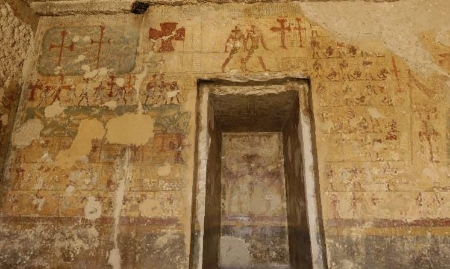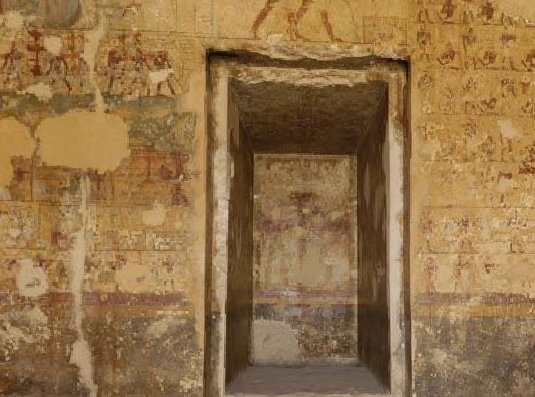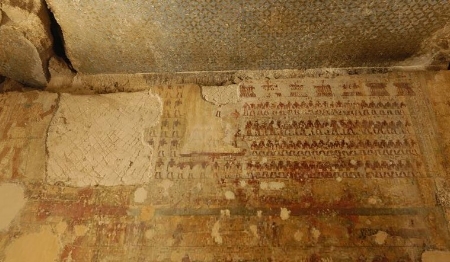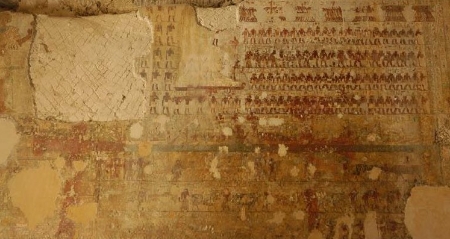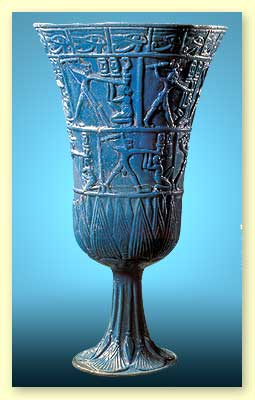|
Egyptian Statue Moved By Ropes? |
||||||||||||
| The following is an examination of
how evidence gets
distorted as it passes from hand to hand...
EXHIBIT A In recent research we were looking
into how the Egyptians
moved the huge blocks of stone and statues. A person
then posted the image
below on a popular discussion board and proceeded to
give facts and figures
based on this figure... This was his SOURCE
Notice
how ALL the details are in place...
|
||||||||||||
|
"Relief from the tomb of
Djehutihotep depicting
172 men pulling a statue of said pharoh, which is
estimated to weigh 58
tons. The large pyramid blocks were probably
pulled in a similar manner."
SOURCE
Yet no mention of the outcome of that same NOVA Exercise |
||||||||||||
|
The next site we exhibit, an Arabian Weekly Magazine, goes even farther...
This is quite an amazing detail of
the scene in the
picture, especially interesting is the description
of the head... Here
is the image provided... you will notice it is now
in bright colorful detail...
easy to see where the previous sketches came from...
Continue below for a tour of the actual Wall in the original chamber... |
||||||||||||
|
Secret Templar Symbols in Egyptian Tomb? When we first discovered this site
and watched the
cubic panorama of the chamber that's what the first
impression was. You
will get that same opportunity shortly. Knowing the
Templar's respect for
ancient sites, we thought it highly unlikely...
Belgian Mission to Deir al-Barsha This is the group that has excavated the area and is studying it in detail. They could use support as they are a charitable organization and it is expensive to dig. If you are interested in participating please contact the Mission directly Excerpts
The above excerpts clearly indicate that the original decoration was striped off and only restoration projects are there... The following images are screen
shots taken from the
"Cubic Panorama" of the Djehutihotep Tomb Chamber.
The first one is the
image as you open the link...
If you look closely at the "statue" you will see that it is a raised amorphous mass of plaster or other material... At the bottom of the shape you will clearly see a red cross that is partial under the plaster. There are also several other images partially obsured. The fact that the plaster is raised above the surface is shown by the shadow, the same as it shows on the pieces of missing plaster. Beth Vegh niticed that the partial figure "standing on the statue" is of a different color and much brighter paint job. The rope so clear in the earlier drawings {artists concepts!} is not here... This is the obvious things we noticed. We will let you draw your own conclusions. Check out the tomb for yourself. It is a very interesting 3D presentation. The site has others of the surrounding quarries as well.... One last note... don't forget to see the story of the NOVA experiment below. Its very informative |
||||||||||||
|
NOVA Experiment The Matter of the Ropes....
"...our ropes were of sisal, theirs perhaps of halfa grass;..." NOVA Exerpts Most noticeably, a crowd of 50 Egyptian laborers, encouraging one another with raucous cries of mutual support, yanked on ropes attached to a truck-sized block of stone. Weighing perhaps 25 tons, the block rested on a wooden sledge, which the workers were trying to haul along a patch of ground. Earlier, they had firmed up the ground with embedded wooden sleepers laid down crosswise like railroad ties, and had lubricated the sleepers with greasy smears of tallow. The rock had not yet budged, but we were hopeful... In fact, our little scene looked strikingly similar to one depicted in a relief from the 20th-century B.C. The 12th Dynasty scene shows a gigantic statue of Djehutihotep lashed to a wooden sledge, which 172 laborers in four rows pull using ropes tied to the sledge's leading edge. One man leans out over the statue's feet, pouring a liquid under the sledge to lubricate the runners. Another man, apparently calling out orders or encouragement to the pullers, perches on the knees of the statue, which scholars estimated would have weighed 57 tons... "This is the last time!" Then, from on high, he turned to 200-plus leverers and pullers, and yelled at the top of his lungs, "ALLAH AKBAR!! (GOD IS GREAT!)" The sledge jumped and, for the first time, kept on going. One foot, two feet, five feet. Only after about ten feet did it finally grind to a halt. Celebrating Jubilant workers celebrate a good day's work by giving Roger Hopkins a victory lift... Ten feet. All told, in a day's work, maybe 20 feet. Had we done justice to Djehutihotep? Or did our attempt to recreate it in a fashion pale in comparison?... That was over 200 men, modern rope,
steel levers, rollers
sled etc.. 10 feet in one day...only a small stone
of 25 tons... and they
say... "Our sisal rope broke..."
|
||||||||||||
|
Notably, one of the most characteristic materials employed by the ancient Egyptians was faience, the brightly colored frit in use from the earliest times for vessels, inlays and a variety of ornaments. One of the finest assemblages of Egyptian faience anywhere in the world is the little-known collection put together by William Joseph Myers and bequeathed to his old school, Eton College, in 1899. What distinguishes the Myers collection from other assemblages of such objects is the fact that many of the key pieces appear to come from a single site, Tuna el-Gebel.
|
||||||||||||
| FAIR USE NOTICE: This page contains copyrighted material the use of which has not been specifically authorized by the copyright owner. Pegasus Research Consortium distributes this material without profit to those who have expressed a prior interest in receiving the included information for research and educational purposes. We believe this constitutes a fair use of any such copyrighted material as provided for in 17 U.S.C § 107. If you wish to use copyrighted material from this site for purposes of your own that go beyond fair use, you must obtain permission from the copyright owner. | ||||||||||||
| ~ MENU ~ |




